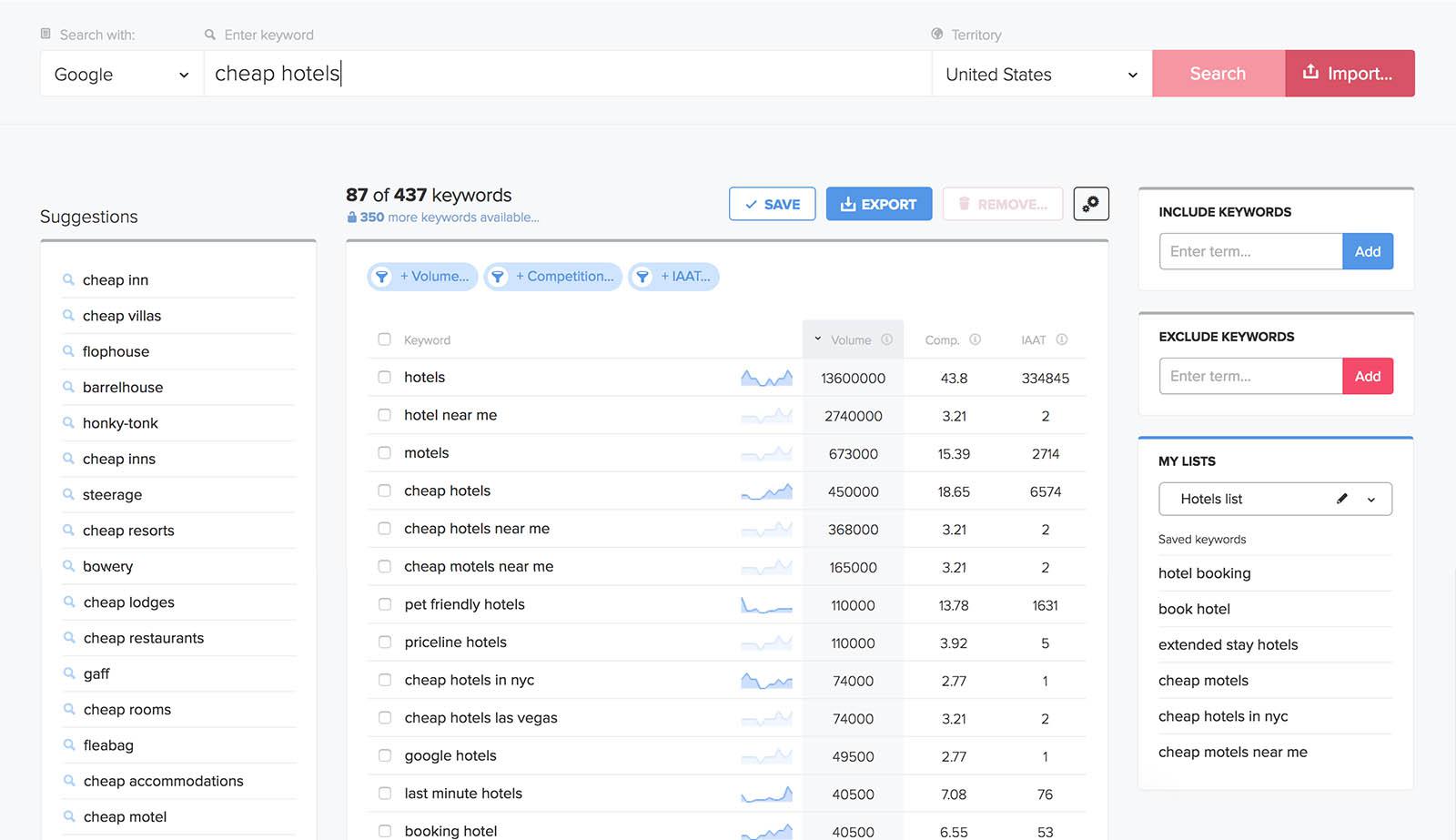Cannibalizing keywords in SEO
Keyword cannibalization is a problem that significantly reduces website traffic. This situation occurs when multiple subpages have been optimized for a single keyword. In this case, Google may have problems figuring out which of the subpages is more important and should appear under the given query in the search results.
Keyword cannibalization most often affects large content sites, where content grows uncontrollably and without a deeper content strategy. Such a website has enormous potential to increase traffic from search engines if cannibalization is dealt with.
How to deal with this problem and what consequences can it have for the company?
The cannibalization effect is a fairly common situation when different (at least two) subpages of the same domain appear in search results and exchange with each other.
For example, there is a plumbing store. In this situation, it may happen that one day, under the phrase "bath", the domain will be displayed in the search results in the third position, moving to the category subpage, and the next day already in the fifteenth position, and the target subpage is not a profitable subpage of the category, but brings in disproportionately lesser benefits (at least directly). Thus, thanks to the cannibalization of keywords, a store, depending on its size, can lose tens of thousands of rubles a day.
 Just a few years ago, the problem of keyword cannibalization was almost non-existent. This is because the search results showed the wrong results. When the search engine found that several subpages in a given domain were consistent with the user's search intent, it linked other subpages related to topics to the main result. As a result, these result groups take up more space, resulting in more records in a given domain than single, less visible results. Therefore, it was even advantageous at the time to have more than one subpage under a specific key phrase. Nowadays, many sites can be observed that show that such practices have been used. Since it was once beneficial, today it has negative consequences in most cases.
Just a few years ago, the problem of keyword cannibalization was almost non-existent. This is because the search results showed the wrong results. When the search engine found that several subpages in a given domain were consistent with the user's search intent, it linked other subpages related to topics to the main result. As a result, these result groups take up more space, resulting in more records in a given domain than single, less visible results. Therefore, it was even advantageous at the time to have more than one subpage under a specific key phrase. Nowadays, many sites can be observed that show that such practices have been used. Since it was once beneficial, today it has negative consequences in most cases.
Reasons for keyword cannibalization
It is often difficult to determine when there is a risk of keyword cannibalization. For sites with very narrow, specialized topics, it seems very difficult to avoid this process. However, cannibalization usually occurs for the following reasons:
- lack of a plan for creating a site. Chaotic website development without a strategy contributes greatly to cannibalization. A smart site expansion plan that takes into account the earlier content and optimizes it for certain phrases is the best warning that effectively reduces the risk of a problem;
- Invalid internal link. Links with the same anchor point to different subpages. Google pays a lot of attention to what phrases are contained in the clickable text element. Thus, it is best to know what type of content the link is pointing to. Therefore, using the same anchors leading to different subpages confuses search engine robots;
- poorly optimized external link profile. The situation is similar to internal links. Whenever possible, you should make sure that backlinks with similar anchors point to the same subpage;
- subpages are optimized for the same key phrases. There is a popular situation where products are replaced with a category subpage with a product subpage or a home page with an About us subpage.
Keyword cannibalization effects
Displaying different subpages in a given search query can lead to a significant decrease in organic traffic. It is usually not entirely clear which Google subpage will be more appropriate and which will reach users. Other effects:
- useless use of the budget. Each page is visited by a Google bot a certain number of times in a certain unit of time. The frequency of crawling depends mainly on the authority of the domain or the size of its index. If many optimized or related subpages are under the same key phrase, this leads to unnecessary searches and indexing. Thus (especially if you are dealing with websites with tens or hundreds of thousands of subpages) – the indexing budget is wasted and restrictions are used to restrict subsequent sections of the website;
- rejection of the authority of the subpage. Digitized subpages compete for existence in search results not only with other domains, but also with each other;
- reduction of domain authority. The presence of many subpages with similar content may indicate to Google that the texts on the page only briefly exhaust the problem. Currently, the search engine attaches great importance to content that comprehensively solves the problems of users.
How to identify keyword cannibalization?
Tools like Senuto, Semstorm, or Ahrefs let you generate a phrase report along with the URLs that the page appears in search results. The resulting file must be parsed into a spreadsheet. The fastest way to do this is to create a pivot table. This way you will find cannibalized URLs.
How to deal with keyword cannibalization?
If there is a problem, then don't wait for Google to solve it. Above all, you need intelligent content planning. Returning to the example of a plumbing online store, the home page can be optimized for the most common phrases like “bathroom fittings”, category subpages for general high-potential phrases like “showers”, product phrases for long-tail phrases, with less potential, but which are searched for by users who are well versed in this issue – "shower + model + specific manufacturer", while blog pages for specific, potential searches, for example, will be, for example, "What kind of shower for a small bathroom? " This seems to be the most classic optimization action strategy, minimizing the risk of keyword cannibalization.
However, what if the problem already arises and the lack of stability is already evident? Here are the ways to combat cannibalization:
- modification of a cannibalized subpage. Reducing saturation by using the key phrase of subpages that are less important is the most common solution. However, this is not only the text itself. Also take care of the title tag, headings, alt attributes;
- linking from less significant subpages. An example of a bathroom store. It is not easy to make sure that the phrase, which is also the name of the category, meaning "shower cabins", is not mentioned at least a few times in the record about shower cabins. In this case, you need to link to the category subpage, giving a clear signal to the Google robot what your priorities are;
- using the rel = canonical tag. Thus, Google "officially" tells which subpage is the "original" – in this case, it is more important, while providing it with a duplicate page. A canonical link should be used when a duplicate subpage is useful to the user;
- using noindex capabilities. There is a strong possibility that Google will not necessarily follow the guidelines and, despite the canonical rules, will still index the digitized subpages. In this case, if the site owner is not very concerned about transferring pagerank, he can set the meta tag to noindex on less important subpages. In this case

